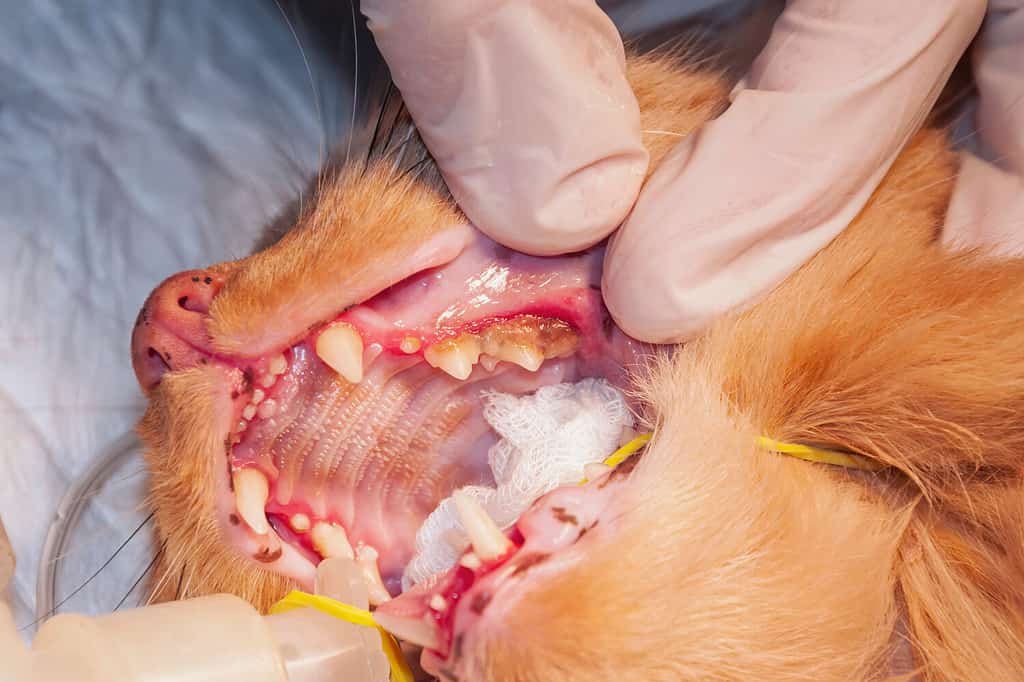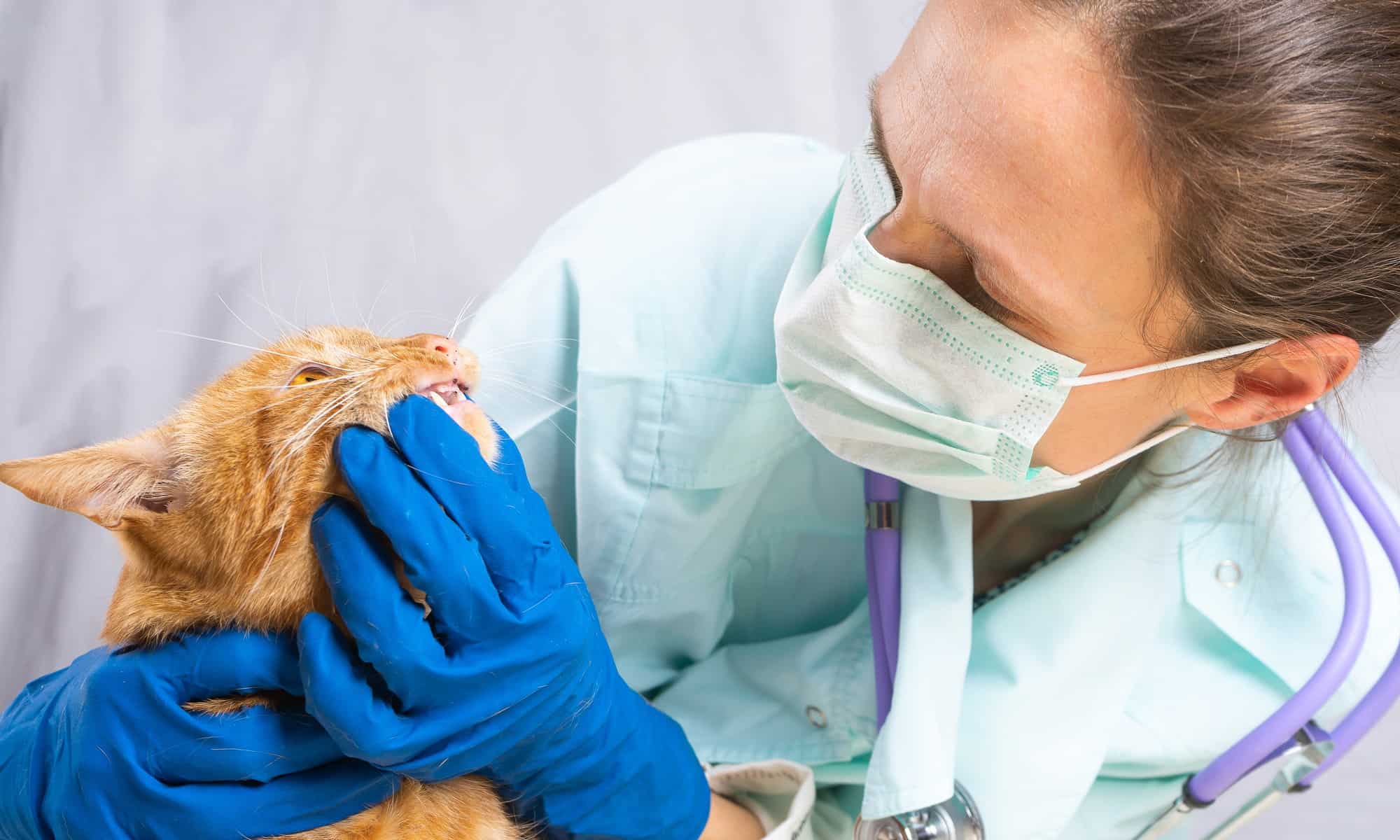You can get a good look at your cat’s teeth when they yawn, especially if they’re laying on your chest when they do. You might notice a bit of plaque and tartar buildup depending on their age. You may also notice halitosis. You may already have a teeth brushing routine with your favorite feline or you may be looking at your screen quizzically, wondering how you didn’t know teeth brushing was necessary for kitties to prevent the development of dental disease. Learn about dental disease in cats, including causes, symptoms, and treatment. Plus, get insight from a cat-only vet who offers suggestions for prevention.
Dental Disease in Cats: Causes
Genetics
Some cats, based on their genetics, may be more prone to the development of dental disease. To help your kitty, be sure you understand what health issues, including dental problems, they may be susceptible to so you can work proactively to prevent the development of these issues.
Age
There are several different types of dental diseases and the older your cat gets, the more likely they are to develop one of them. As your cat gets older, dental care becomes more important, as they have already experienced an accumulation of plaque and tartar.
Poor Dental Care

Without preventive care, plaque and tartar can build up and irritate your kitty’s gums, leading to dental disease.
©mojahata/Shutterstock.com
Like humans, cats need to practice dental care with your help. This doesn’t just mean brushing their teeth, but also providing them with dental treats and cat toys they can chew on. Aside from the at-home care you provide, you should follow up with your veterinarian for wellness visits and schedule dental cleanings as advised by them.
Poor Diet
A cat with a poor diet is more likely to develop dental disease as well. Without a bit of crunch in your cat’s food, it’s possible that plaque and tartar form more rapidly. Kibble and dental treats offer some of the abrasive texture a cat needs to keep plaque and tartar formation at a minimum.
Plaque and Tartar Formation
Plaque can develop on a cat’s teeth. Left untouched, it hardens and becomes tartar, which is more difficult to remove. Without proper care, untouched tartar can progress further, leading to dental disease.
Dental Disease in Cats: Symptoms
Your cat may experience a range of symptoms when dental disease is present. When a condition has progressed, it’s uncomfortable for your cat and can detrimentally impact their quality of life. If you notice any unusual symptoms, consult with your veterinarian to determine next steps.
Symptoms of dental disease in cats include visible yellow and brown tartar on the teeth, tooth loss, and chattering. The saliva of a cat with dental disease may have some blood in it. You may also notice excessive drooling. A cat with dental disease has stinky breath as well.
You may also notice changes around food. They may avoid hard kibble and stick to soft foods that are easy to chew. They may also have trouble swallowing their food, so you may notice that they drop their food often. As a result of trouble eating, they may experience weight loss.

Cats may experience several symptoms when dealing with dental disease, including decreased appetite and weight loss.
©Lightspruch/Shutterstock.com
Dental Disease in Cats: Treatment
Treatment for dental disease in cats depends on the type of dental disease present. However, there are some general treatment options, depending on the severity of the condition. For example, the presence of plaque and tartar alone can be treated with toothbrushing at home.
For conditions that have progressed like gingivitis, periodontitis, stomatitis, or tooth resorption, treatment may be more involved to include x-rays, dental cleanings, oral meds, and sometimes dental surgery. It’s much better for both you and your cat to work on preventing dental disease.
Dental Disease in Cats: Prevention
Dr. Colleen Wallace, a cat-only vet at Cozy Cat Veterinary Hospital in Raleigh, NC told A-Z-Animals, “Brushing the teeth is the very best way to prevent dental diseases in cats. You should start getting your kitten used to having the teeth brushed as early as three months of age, then brush the teeth two to three times per week thereafter. If your cat is older, you can try to get them to accept the tooth brushing as part of the routine, just like with nail clipping.”
She went on to explain, “However, some cats will just not allow you to do this. For those cats, you can try using a product like ProDen PlaqueOff on the food, which may be somewhat helpful. I do not recommend products that go into the water, as the taste may decrease their water intake and affect their hydration. Make sure your kitty has its teeth examined during their annual exam, as most cats will need to have a dental cleaning at least once or twice in their lives.”
Thank you for reading! Have some feedback for us? Contact the AZ Animals editorial team.








